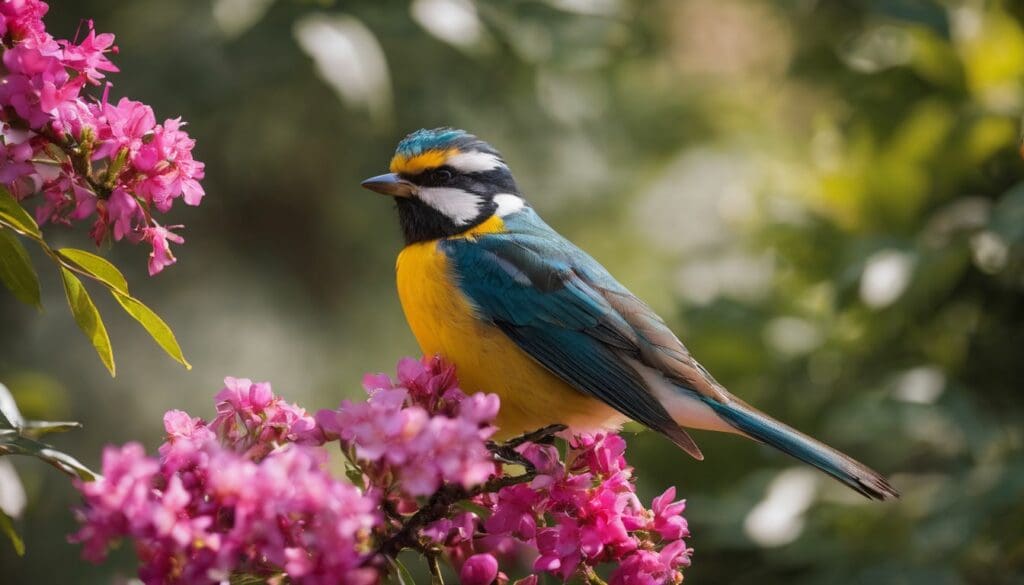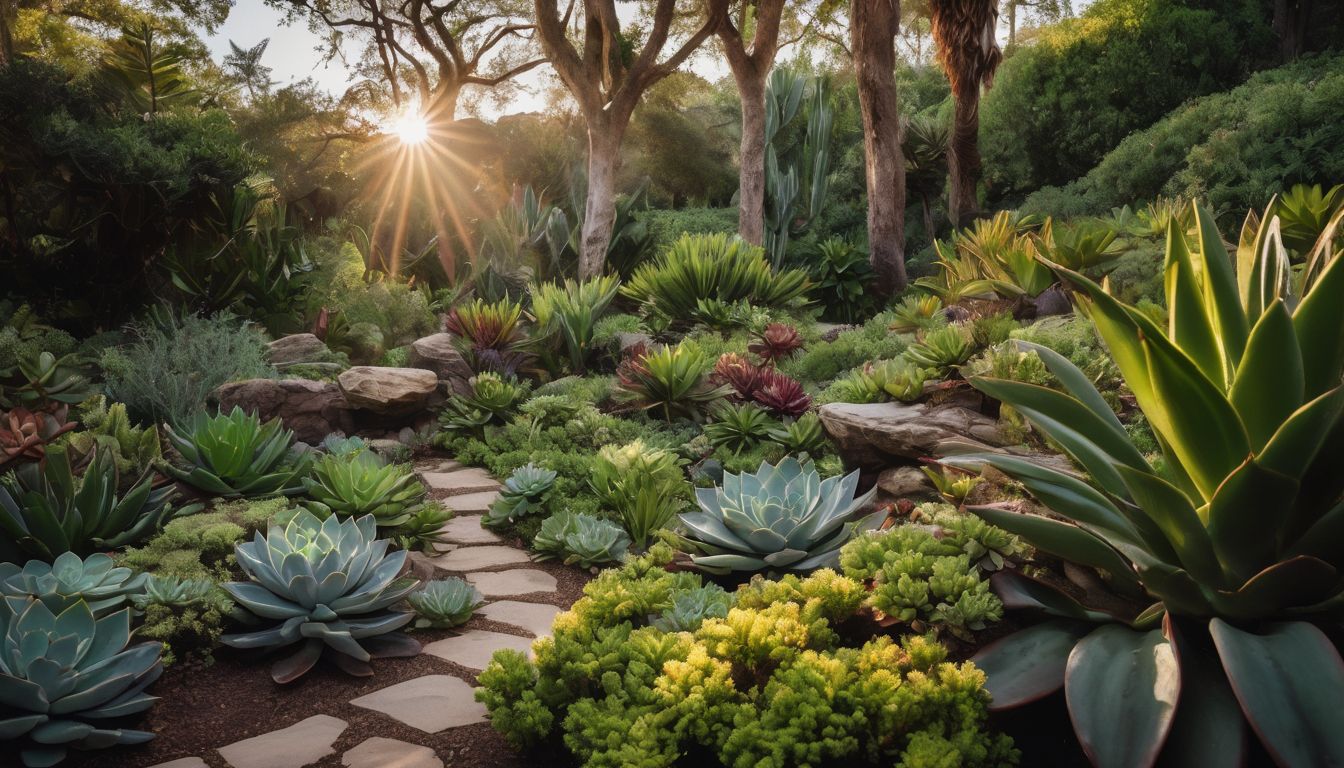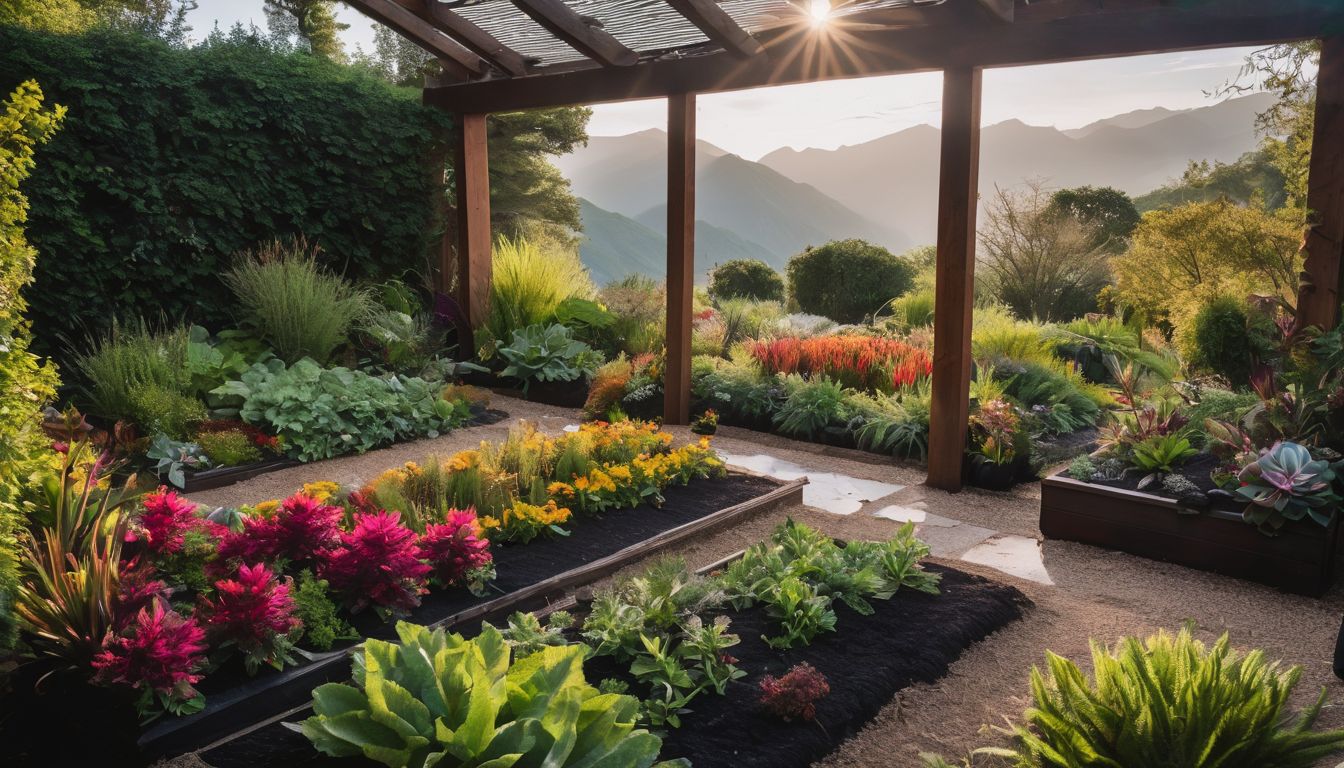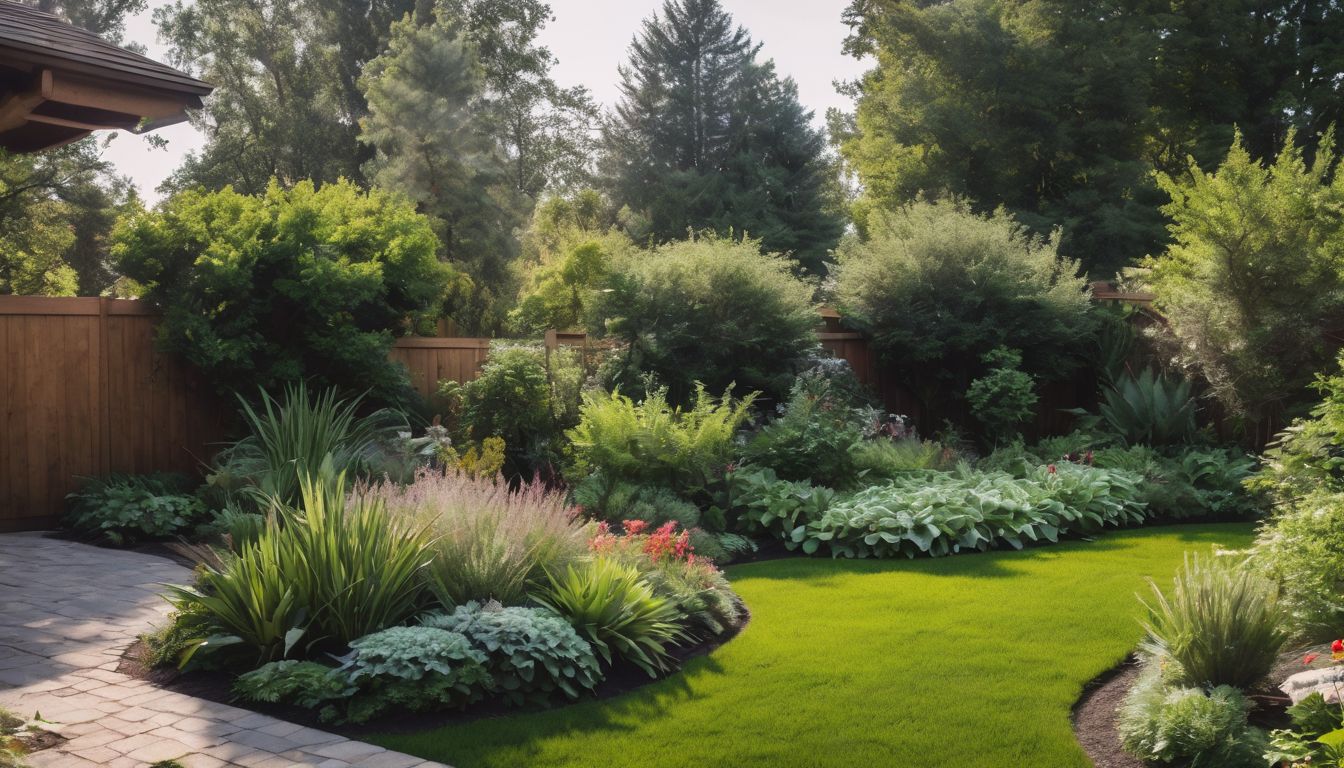Gardens are more than just a space for plants; they’re potential havens for wildlife. A staggering 67% of British species are struggling, but our backyards can offer them refuge. Today’s post unveils simple steps to transform your garden into a thriving wildlife habitat, beckoning nature’s diversity right to your doorstep.
Discover how with us!
Key Takeaways
- Establish a variety of food sources in your garden to cater to different wildlife; for example, plant native wildflowers, set up bird feeders, and install bee hotels.
- Provide clean water through features like birdbaths or ponds which are essential for birds, insects, and other garden visitors to drink and bathe.
- Offer shelter with nesting boxes for birds, dense shrubs for mammals, rock piles for reptiles, and woodpiles that give nocturnal creatures somewhere to hide and rest.
- Avoid using harmful pesticides and chemicals in your garden; instead use sustainable practices such as composting kitchen scraps to enhance soil without endangering wildlife.
- Make sure you have areas in the backyard where young animals can grow safely by providing spaces like frog ponds or leaving parts of the land undisturbed.
What is a Certified Wildlife Habitat?
A Certified Wildlife Habitat is a garden or outdoor space that has been recognised for its wildlife-friendly design and practices. Becoming certified offers numerous benefits, including supporting local biodiversity and contributing to conservation efforts.
Benefits of having a Certified Wildlife Habitat
Having a Certified Wildlife Habitat in your garden serves as a haven for local wildlife, nurturing the small but vital creatures that keep our ecosystems buzzing. It’s more than just hosting an array of birds and butterflies; you’re actively participating in wildlife conservation.
This certification not only enhances garden biodiversity but also contributes to ecological balance by providing essential resources like food, shelter, and water to different species.
Creating such habitats helps support pollinators crucial for plant reproduction while fostering a sustainable environment right in your backyard. You’ll witness the dynamic interplay of nature as native plants thrive and attract wildlife, establishing a living space that encourages natural pest control and promotes healthier plant growth.
Your efforts in making your garden wildlife-friendly can have far-reaching impacts beyond just aesthetic appeal—they bolster the urban wildlife habitat and make real contributions towards preserving our planet’s precious biodiversity.
How to become certified
To become certified as a wildlife habitat, you can follow these steps:
- Register your garden through the National Wildlife Federation‘s website.
- Provide food, water, cover, and places for wildlife to raise their young in your garden.
- Use sustainable practices in your gardening, such as composting and reducing chemical use.
- Certify that your yard meets the requirements by filling out the application and paying a small fee.
- Receive your certification and proudly display the Certified Wildlife Habitat sign in your garden.
Components Required for Backyard Habitat Certification
To become certified, your backyard habitat must provide a water source, food sources, shelter and cover for wildlife, support for young animals, and sustainable practices. These components are essential to creating a thriving environment for local wildlife.
Providing a water source
To ensure a wildlife-friendly garden, provide a water source to attract and support various species. This can be achieved by:
- Installing a birdbath or shallow pond to offer drinking and bathing opportunities for birds, insects, and small mammals.
- Using a drip irrigation system or setting up a rain barrel to create a reliable water supply for wildlife during dry periods.
- Adding a small fountain or waterfall feature to create movement and sound, attracting wildlife while providing access to fresh water.
- Including shallow dishes filled with pebbles to allow butterflies and other insects to perch while sipping water without drowning.
- Maintaining clean water sources by regularly rinsing bird baths and checking for standing water in unused containers that could become breeding sites for mosquitoes.
Offering food sources
After providing a water source for your garden, another essential component of creating a wildlife habitat is offering food sources. Here are some ways to provide food sources for the wildlife in your garden:
- Plant native wildflowers and shrubs that produce nectar and berries, such as honeysuckle, elderberry, and black-eyed Susan.
- Set up bird feeders with a variety of seeds, nuts, and suet to attract different bird species.
- Incorporate fruit – bearing trees like apple or cherry to provide natural food sources for birds and small mammals.
- Create an insect – friendly environment by leaving some areas of your garden untamed, allowing grasses and wildflowers to grow freely.
- Consider installing bee hotels or nesting boxes to offer shelter and nesting sites for beneficial insects and birds.
Creating shelter and cover
To create shelter and cover in your garden wildlife habitat, follow these steps:
- Place nesting boxes or birdhouses around the garden to provide safe spaces for birds to build their nests.
- Add dense, low-growing shrubs and native grasses to offer protection for small mammals and ground-nesting birds.
- Install rock piles or log piles to create hiding spots for reptiles, insects, and other small creatures.
- Incorporate a variety of trees with different canopy densities to offer shelter for different bird species and mammals.
- Introduce flowering plants with large leaves to create shady areas that can serve as hiding spots for insects and amphibians.
Supporting young
To support young wildlife in your garden, consider creating nesting areas by placing bird boxes or providing brush piles for small mammals. You can also incorporate plants that serve as host plants for butterfly larvae and provide hiding spots for young animals. Additionally, leaving some areas of your garden wild and undisturbed can offer safe spaces for young wildlife to grow and thrive.
- Sustainable practices
Sustainable practices
To support young wildlife in your garden, it is essential to implement sustainable gardening practices. By avoiding the use of pesticides and chemicals, you can create a safe environment for growing plants and nurturing wildlife.
Using organic fertilisers will help maintain a healthy ecosystem and support the local wildlife population without harming them. Additionally, practising water conservation methods such as collecting rainwater or using drip irrigation systems can ensure that your garden remains sustainable and beneficial for various species.
Incorporating native plants into your garden not only provides food sources but also helps sustain the local ecosystem. Opting for drought-resistant varieties reduces water consumption while supporting pollinators and other wildlife.
Designing Your Wildlife Garden
Prepare the site for planting, choose a focal point and balance a natural look with functionality.
Preparing your site for planting
Begin by surveying your garden area, noting the soil composition, sunlight exposure, and drainage. Ensure that the location you choose is suitable for the types of plants you want to grow and the wildlife you hope to attract.
- Test your soil pH levels to determine if any amendments are necessary to create an optimal growing environment for native plants and wildflowers.
- Clear the site of any debris, rocks, or weeds that could hinder plant growth or provide shelter for unwanted pests.
- Consider incorporating native plants that are well – suited to your specific growing conditions, as they will support local wildlife and require minimal maintenance.
- Create planting beds or naturalised areas that mimic local ecosystems, providing diverse habitats for a variety of wildlife species.
- Plan for continuous blooms throughout the growing season by selecting a mix of early, mid-season, and late-flowering plants.
Choosing a focal point
Select a central focal point in your wildlife garden to draw the eye and create visual interest. This could be a flowering tree, an ornamental pond, or a decorative bird bath. By choosing a captivating focal point, you can attract more wildlife while enhancing the natural beauty of your garden.
The key is to strike a balance between functionality and aesthetics – ensuring that the focal point complements the overall design without overwhelming it.
To make your chosen focal point truly stand out, consider surrounding it with native plants and flowers that will further attract and support local wildlife. Keep in mind the needs of different animals when selecting your central feature – for example, opt for plants that provide food sources or shelter for birds and butterflies.
Balancing a natural look with functionality
To create a wildlife-friendly garden, it’s important to balance aesthetics with practicality. Incorporate native plants and flowers to attract wildlife while also considering their functional role in the ecosystem.
Opt for a mix of plant species that offer food and shelter for various creatures, ensuring your garden looks natural while serving its purpose as a habitat. Utilise natural materials like logs, rocks, and fallen leaves strategically to provide hiding spots or nesting areas for wildlife without compromising on the visual appeal of your garden.
Striking this balance ensures that your garden not only looks beautiful but also actively supports local wildlife, creating a harmonious space where both aesthetics and functionality coexist seamlessly.
Ways to Attract Wildlife to Your Garden
Planting butterfly-friendly plants and providing bird feeders can attract a variety of wildlife to your garden. Adding water sources, composting, and creating woodpiles for nocturnal creatures are also effective ways to make your garden more inviting to local wildlife.
Planting butterfly-friendly plants
To attract butterflies to your garden, plant a variety of nectar-rich flowers. Ensure there are plants for different stages, including caterpillars and adult butterflies. Also include host plants that caterpillars feed on, such as milkweed for monarch butterflies.
- Choose native plants like purple coneflower, butterfly bush, and black-eyed Susan that provide nectar and pollen for butterflies.
- Plant in clusters for easier navigation and a visual impact.
- Include larval host plants like dill for swallowtail butterflies or milkweed for monarchs.
- Avoid using pesticides to protect the caterpillars and adult butterflies from harm.
- Provide mud puddles or shallow dishes with sand for male butterflies to extract minerals essential for reproduction.
Providing bird feeders
To complement the biodiversity in your garden, consider providing bird feeders. This will add another layer of attraction for wildlife while supporting the local bird population. Here are some types of bird feeders that you can incorporate into your garden:
- Hanging feeders: Utilise hanging feeders to attract small birds like tits, sparrows, and finches. These can be filled with a variety of seeds and nuts.
- Ground feeders: Attract ground-feeding birds such as doves and robins by scattering seeds or grains on a designated feeding area.
- Suet feeders: Hang suet feeders to entice insect-eating birds like woodpeckers and nuthatches with high-energy suet cakes.
- Hummingbird feeders: Install hummingbird-specific feeders with nectar to allure these tiny, colourful birds to your garden.
- Platform feeders: Place platform feeders to cater to larger birds like jays and pigeons; these can accommodate different types of food, including seeds and fruits.
- Squirrel-proof feeders: Consider squirrel-proof designs if squirrels are prevalent in your area; this will help prevent them from consuming all the bird food.
- Cleanliness: Regularly clean and refill the bird feeders to maintain a healthy feeding environment for the birds visiting your garden.
Composting
To complement providing bird feeders and attracting wildlife to your garden, composting is another essential practice for creating a wildlife-friendly habitat. Composting involves recycling organic waste from your kitchen and garden into nutrient-rich soil for your plants.
By composting, you can reduce the amount of waste sent to landfills while enriching your garden’s soil naturally. This sustainable practice also attracts beneficial organisms like earthworms and other decomposers that help create a healthy ecosystem in your backyard.
Composting provides an opportunity to nourish your garden without using harmful chemicals, ensuring that it remains a safe haven for wildlife. It’s one of the key elements in establishing a certified wildlife habitat right in your backyard, promoting a balanced and natural environment where both flora and fauna thrive harmoniously.
Adding water sources
To attract wildlife to your garden, consider adding water sources. This can be achieved by creating natural or artificial water features such as birdbaths, ponds, or small streams. Water sources provide animals with drinking and bathing opportunities, vital for their survival.
- Bird baths: Place a shallow basin in your garden and keep it filled with clean, fresh water. Ensure to place it in a safe spot away from predators.
- Ponds: Design and install a pond that attracts frogs, toads, dragonflies, and other aquatic wildlife. Make sure the pond has gentle slopes to allow easy access for small animals.
- Fountains: Install a small fountain that provides running water – this can attract birds and butterflies while also adding a soothing aesthetic to your garden.
- Rain gardens: Create a rain garden that collects stormwater runoff and provides habitat for wetland plants that attract wildlife like birds and insects.
- Drippers and misters: Use drippers or misters to create tiny droplets of water which can attract various insects as well as hummingbirds.
Creating woodpiles for nocturnal creatures
Creating woodpiles for nocturnal creatures:
- Stack logs and branches to create shelter and nesting sites.
- Provide hiding spots for small mammals, reptiles, amphibians, and insects.
- Place the woodpile in a quiet corner of your garden to minimise disturbances.
- Use fallen or dead wood to avoid harming live trees and plants.
- Ensure the woodpile is stable to prevent collapse.
Conclusion
In conclusion, creating a garden wildlife habitat is a rewarding way to support local ecosystems and biodiversity. By incorporating water sources, food options, and shelter for animals, you can provide a safe haven for wildlife in your own backyard.
Designing the space with native plants and sustainable practices will ensure that your garden remains an inviting environment for various species. Attracting wildlife to your garden not only adds beauty but also contributes to the overall health of the environment.
With these steps, you can turn your yard into a thriving wildlife sanctuary.
FAQs
1. What does creating a garden wildlife habitat involve?
Creating a garden wildlife habitat involves designing your garden to support local wildlife by planting flowers for pollinators, providing natural habitats for animals, and using sustainable gardening practices.
2. Can I get my backyard certified as a wildlife habitat?
Yes, you can work towards enhancing your yard to meet certain criteria and apply for a wildlife habitat certification that acknowledges your efforts in making your backyard friendly for different species.
3. How can I make my garden attractive to wildlife?
To attract more creatures to your space, consider building habitats like birdhouses or ponds in the backyard and growing plants that offer food and shelter – thus turning your garden into a haven for diverse wildlife.
4. Why is it important to create habitats for pollinators in my garden?
Pollinators are crucial for plant reproduction; having them around ensures the health of your plants. Gardening specifically with these creatures in mind supports their populations while helping maintain biodiversity within the ecosystem.
5. Are there specific steps I should follow when building a habitat for wildlife in my backyard?
There are several tips you can follow: start by assessing the current state of your yard, then gradually introduce elements like water sources or native flora – each step geared toward crafting an inviting wildlifefriendly environment.





